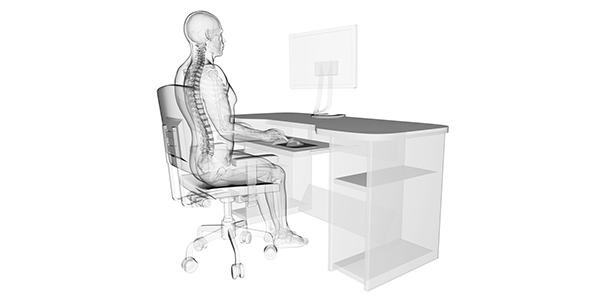1:30min

Optometrist and ergonomist Jennifer Long has compiled tips for Optometrists Association to help optometrists prevent work-related discomfort and injury.
The association commissioned Dr Long to write two Practice Notes entitled ‘Working Comfortably in the Consultation Room‘. They have been published as a resource on the association website and can be viewed here.
One Practice Note is for practice owners, employers and managers, and the other is for employee, locum and sessional optometrists.
The one for employers offers suggestions for planning and designing consulting rooms so that they are comfortable for optometrists, and provides tips for ensuring that optometrists remain comfortable once the room is operational.
The Practice Note for employees describes how optometrists can assess the consulting room before they start work in it and how they can make personal adjustments to improve comfort, and offers suggestions for improving comfort when working at external clinics.
Both Practice Notes include practical examples and suggestions for what employers and employees can do if work-related discomfort becomes an issue.
‘Most of the examples are based on comments made to me by optometrists who participated in my research,’ Dr Long said.
Dr Long has studied the area extensively. Her world-first study of more than 500 optometrists, optometry students and educators was initiated after many anecdotal reports of discomfort or injury.
The study documented work-related musculoskeletal discomfort and injuries in Australian optometrists.
It identified being female and having more than 11 consultations a day as risk factors. Performing repetitive tasks and continuing to work while injured increased risk of severe discomfort.
Factors contributing to discomfort included awkward and sustained postures, inability to adjust equipment and insufficient space.
Discomfort occurred before optometrists graduated and practitioners were implementing strategies including adjusting posture and equipment, altering work schedules and performing alternative procedures, some of which were successful.
Dr Long, a conjoint senior lecturer at the University of New South Wales School of Optometry and Vision Science, organised the world’s first forum on reducing work-related discomfort in the ophthalmic industry, in Sydney in June.
The forum suggested ways to improve comfort and reduce injury risk and heard that an industry-wide solution was required as the issue has personal consequences for optometrists and their families, and business and legal implications for the profession.
The stakeholder seminar heard that at least two Australian optometrists had been medically retired from the profession due to their work-related injuries and others had to reduce their working hours.
Dr Long said some equipment suppliers were aware of the issue as they had had optometrists request equipment modifications to improve comfort.
Educating students and educators about best practice and maximising student exposure to good practice could reduce risk and had proven effective in nursing, she said.